Washington State Capitol Building
Introduction
Text-to-speech Audio
Images
The Washington State Capitol in Olympia
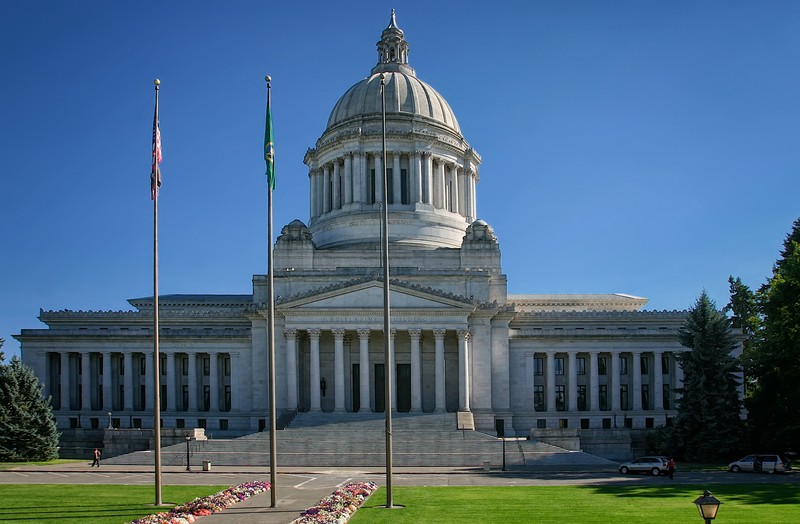
The Washington State Capitol Campus along Puget Sound
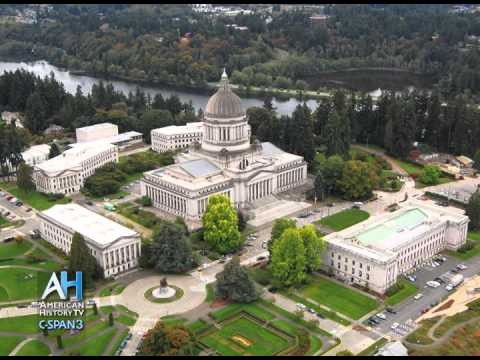
The 10,000 pound Tiffany chandelier hangs above the Washington state seal
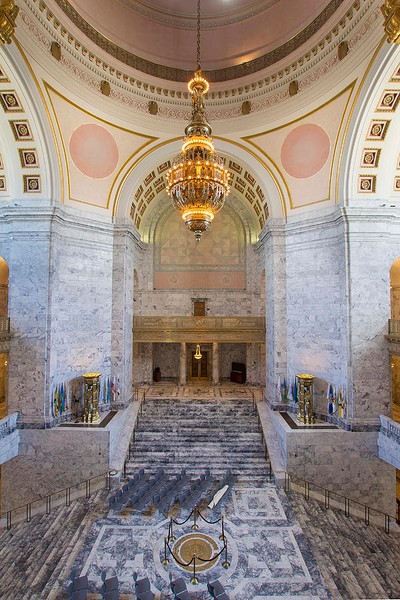
The Washington House of Representatives' Chamber inside the Capitol
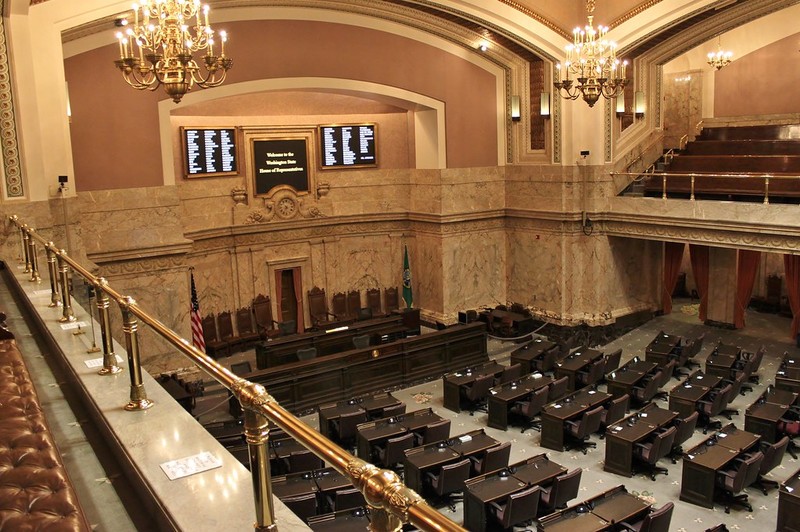
Washington's territorial and first state capitol building, since torn down

The Thurston County Courthouse became Washington's second state capitol building, and is now the Office of Superintendent of Public Instruction
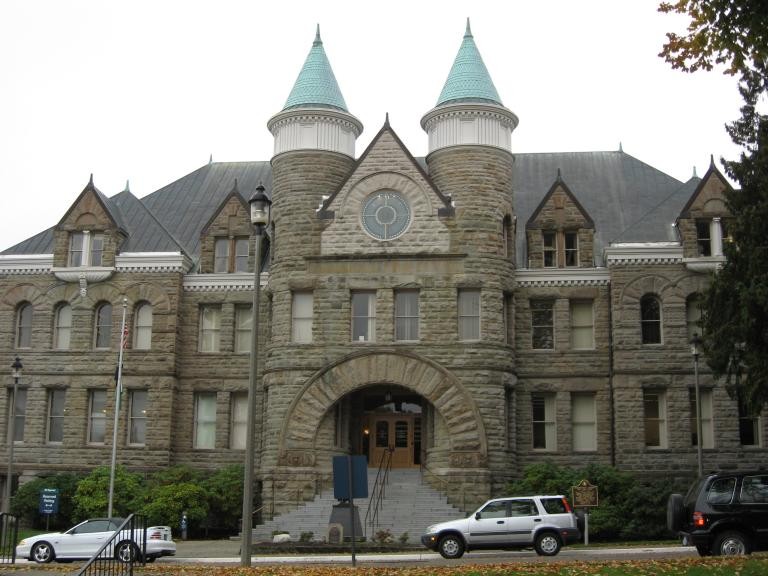
Backstory and Context
Text-to-speech Audio
Washington became an official territory of the United States in 1853, with Olympia designated as its capital. That same year, Olympia’s founder Edmund Sylvester donated 12 acres of land to the territorial legislature, to be used as the site of the capitol building. Over the next several decades, the government outgrew the two-story wooden structure that served as the original capitol. In 1893, the state announced a competition that called for designs for a new capitol building.
The winner of the competition was a New York architect named Ernest Flagg, a relative of Cornelius Vanderbilt. Flagg built a basement and laid the foundation of the building, but construction was halted due to the Panic of 1893. In 1901, the state purchased the nearby Thurston County Courthouse and repurposed it as the capitol building (it is now the Office of Superintendent of Public Instruction). Realizing that this building was also too small, the state held another design competition in 1911. This time, the winners were Walter Wilder and Harry White, with the stipulation that Flagg’s earlier foundations still be used.
Wilder and White did not just design one structure, but an entire campus that was meant to contain six different government buildings. Other notable sites on the capitol campus include the Temple of Justice and the Governor's Mansion, and the landscaping was designed by the famous Olmsted Brothers. Partly inspired by the United States Capitol in Washington, D.C., the Legislative Building became the centerpiece of the campus and the main Capitol Building. When it was completed in 1928, its masonry dome was the fourth-tallest of its kind in the world, behind such iconic cathedrals as St. Peter’s in Rome, St. Paul’s in London, and Santa Maria del Fiore in Florence.
The Capitol Building took six years to build and cost approximately $7.3 million, a price tag that Washington's Governor Roland Hartley railed against at the time. It contains marble from Alaska, Italy, Germany, and France, as well as the largest collection of Tiffany bronze in the world (including a 10,000 pound chandelier that hangs beneath the dome). Washington’s entry as the 42nd state in 1889 is represented by the 42 steps on the staircase at the North Portico. Major earthquakes in 1949, 1965, and 2001 all led to substantial seismic retrofitting, among other improvements.
Sources
- Capitol Facts & History, Washington State Department Enterprise Services . Accessed January 9th 2020. https://des.wa.gov/services/facilities-leasing/capitol-campus/buildings/legislative-building/capitol-facts-history.
- Pierce, J. Kingston. Olympia Capitol--A History of the Building, History Link. April 11th 2003. Accessed January 9th 2020. https://www.historylink.org/File/5443.
- Lost Landmark: Washington's "Temporary" Territorial and First State Capitol, ThurstonTalk. Invalid date. Accessed January 9th 2020. https://www.thurstontalk.com/2018/04/01/territorial-first-state-capitol/.
- Richard, Terry. Washington Capital in Olympia One of World's Tallest Masonry Domes , Oregon Live. April 5th 2013. Accessed January 9th 2020. https://www.oregonlive.com/travel/2013/04/washington_capitol_in_olympia.html.
https://en.wikipedia.org/wiki/Washington_State_Capitol
https://www.ktoo.org/2018/07/04/powerful-groups-back-washington-carbon-fee-initiative/washington-state-capitol-20091001/
https://fineartamerica.com/featured/washington-state-capitol-rotunda-chandelier-jpldesigns.html
https://www.flickr.com/photos/sounderbruce/32355529764
https://www.thurstontalk.com/2018/04/01/territorial-first-state-capitol/
https://olympiahistory.org/old-state-capitol/
